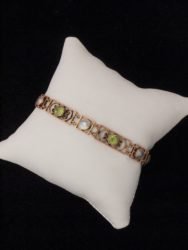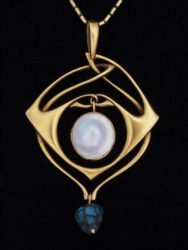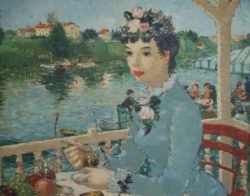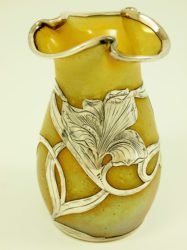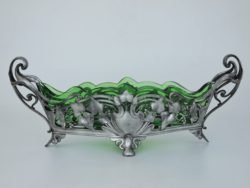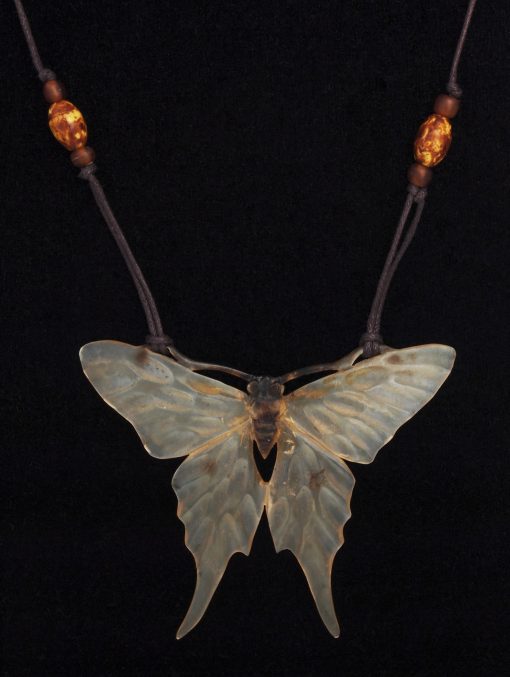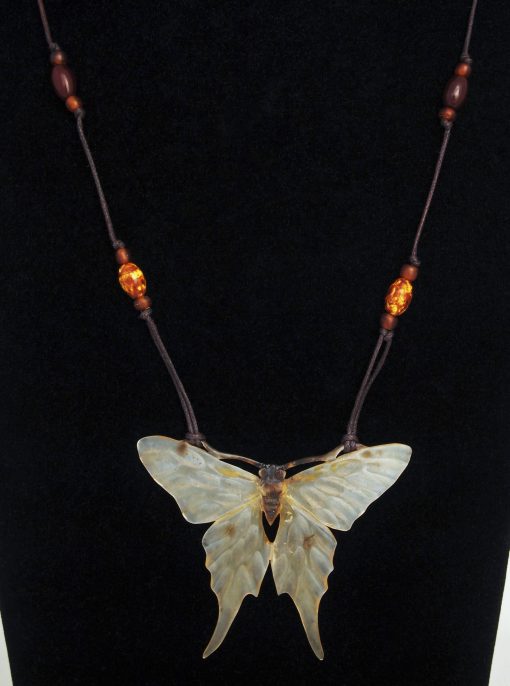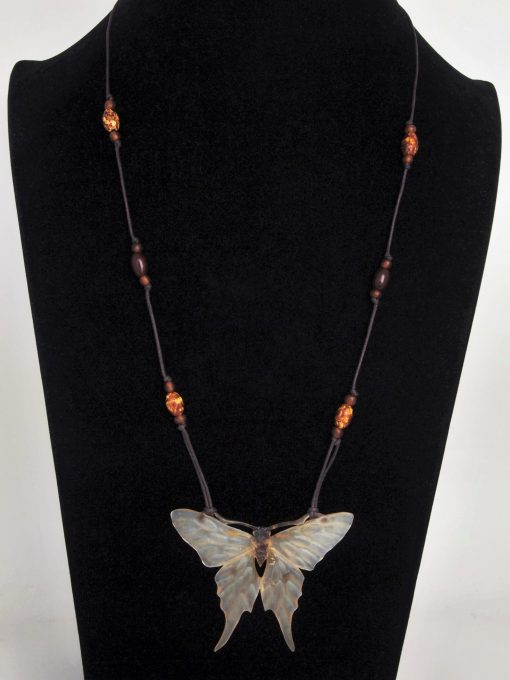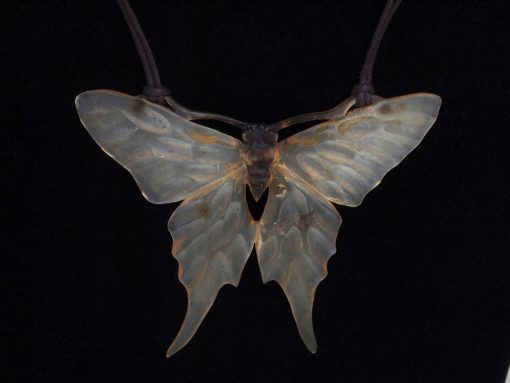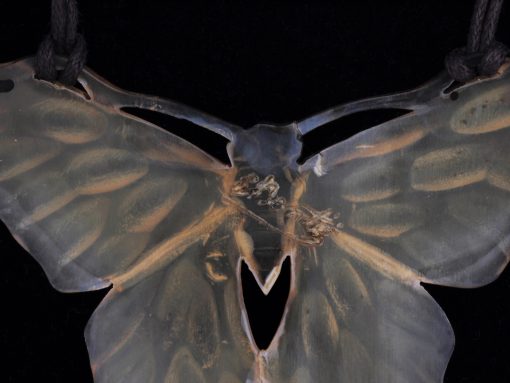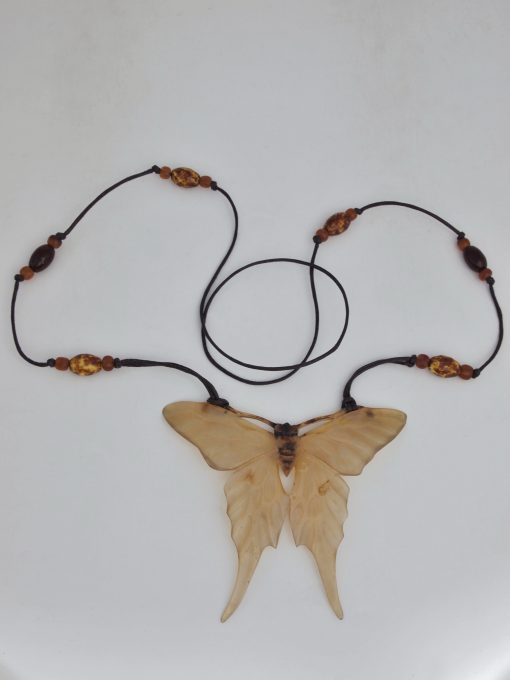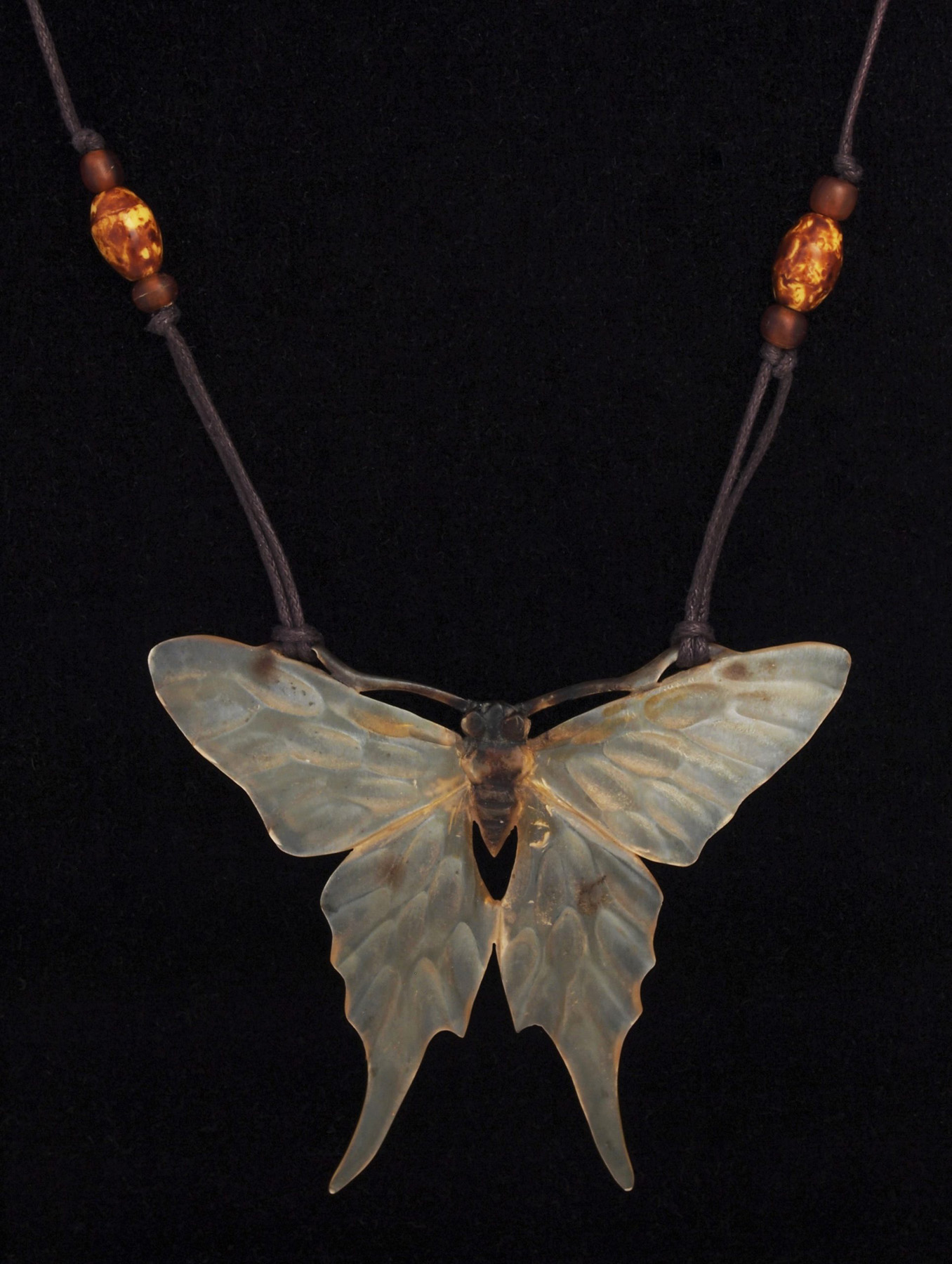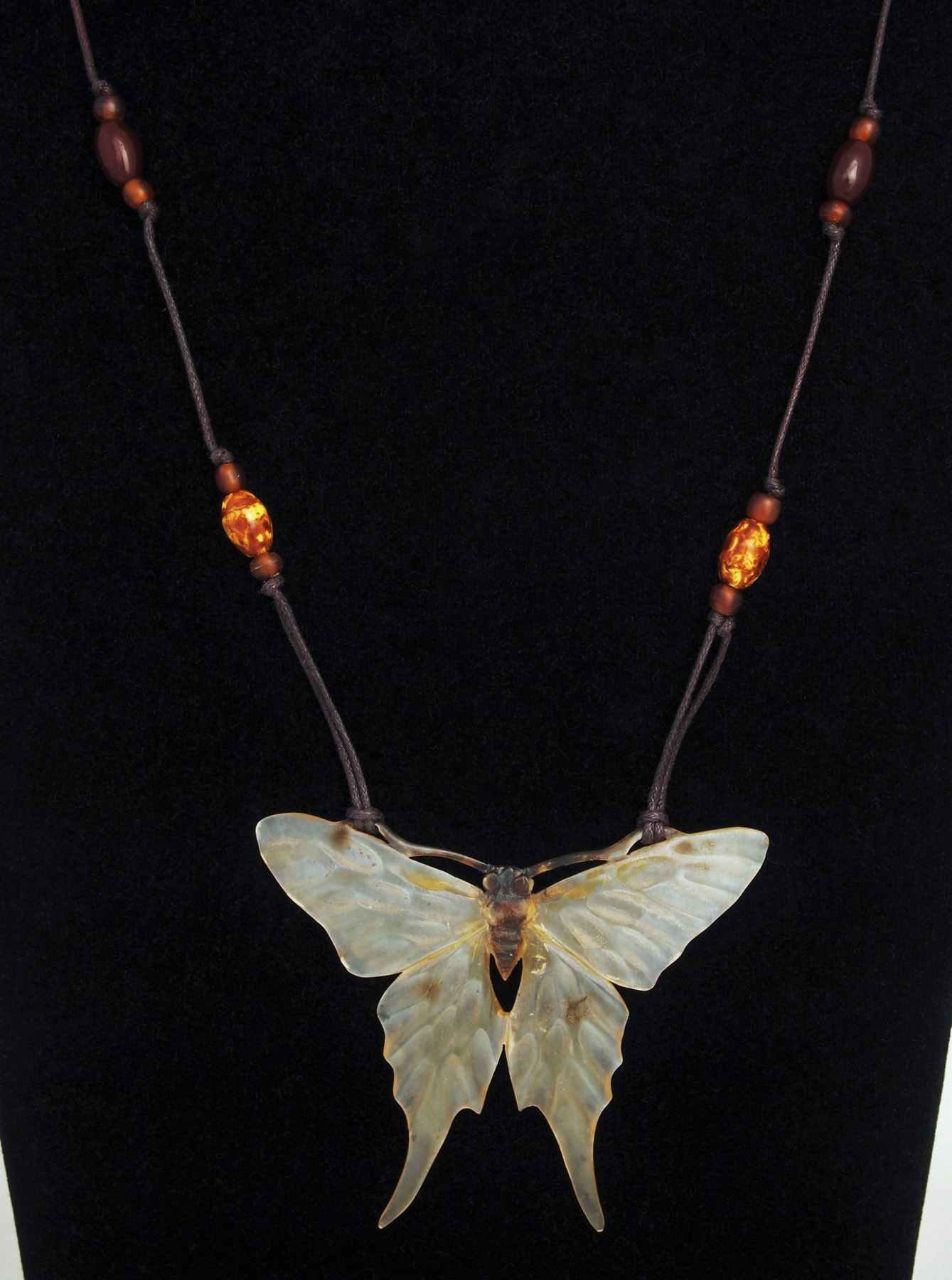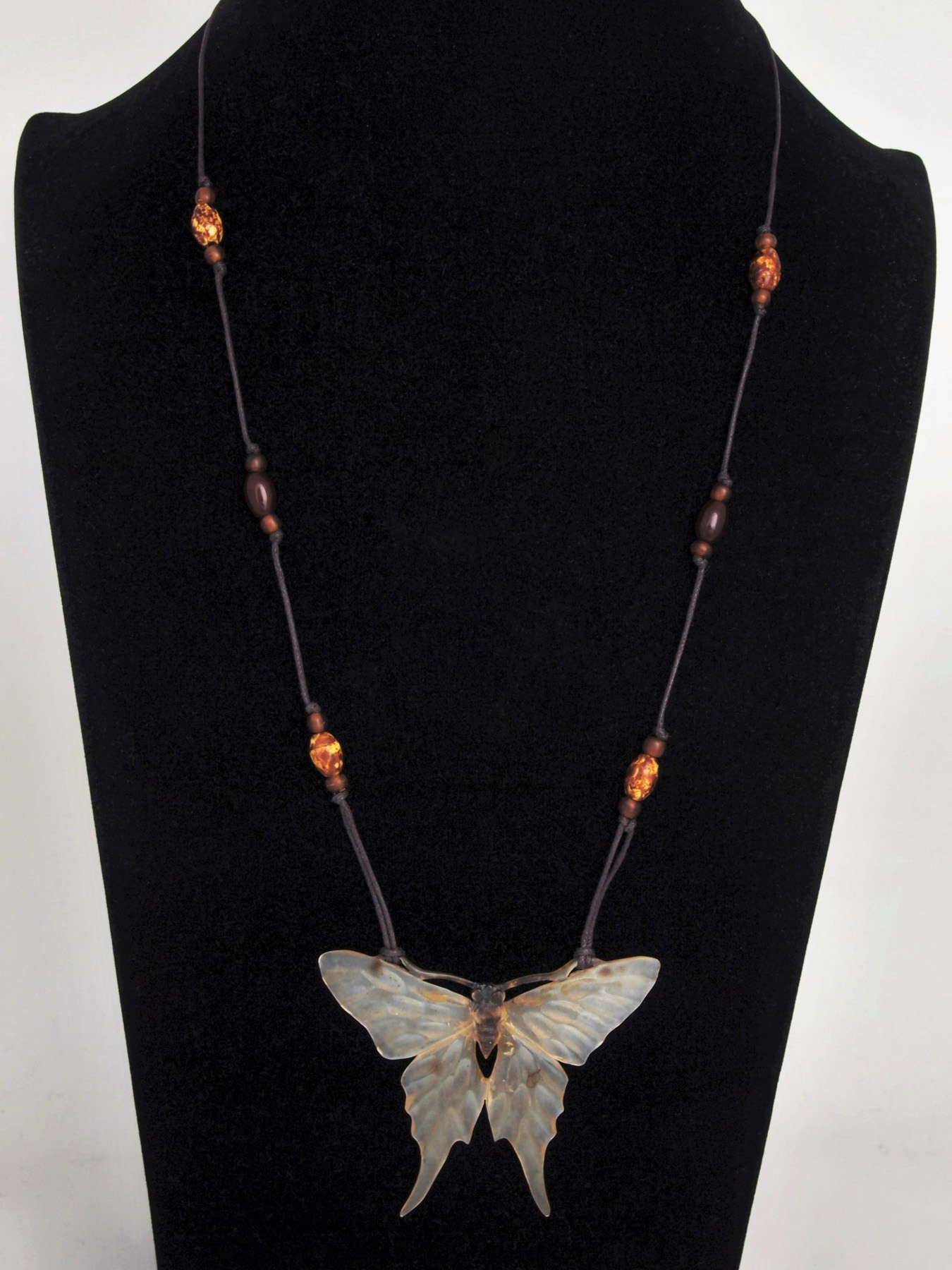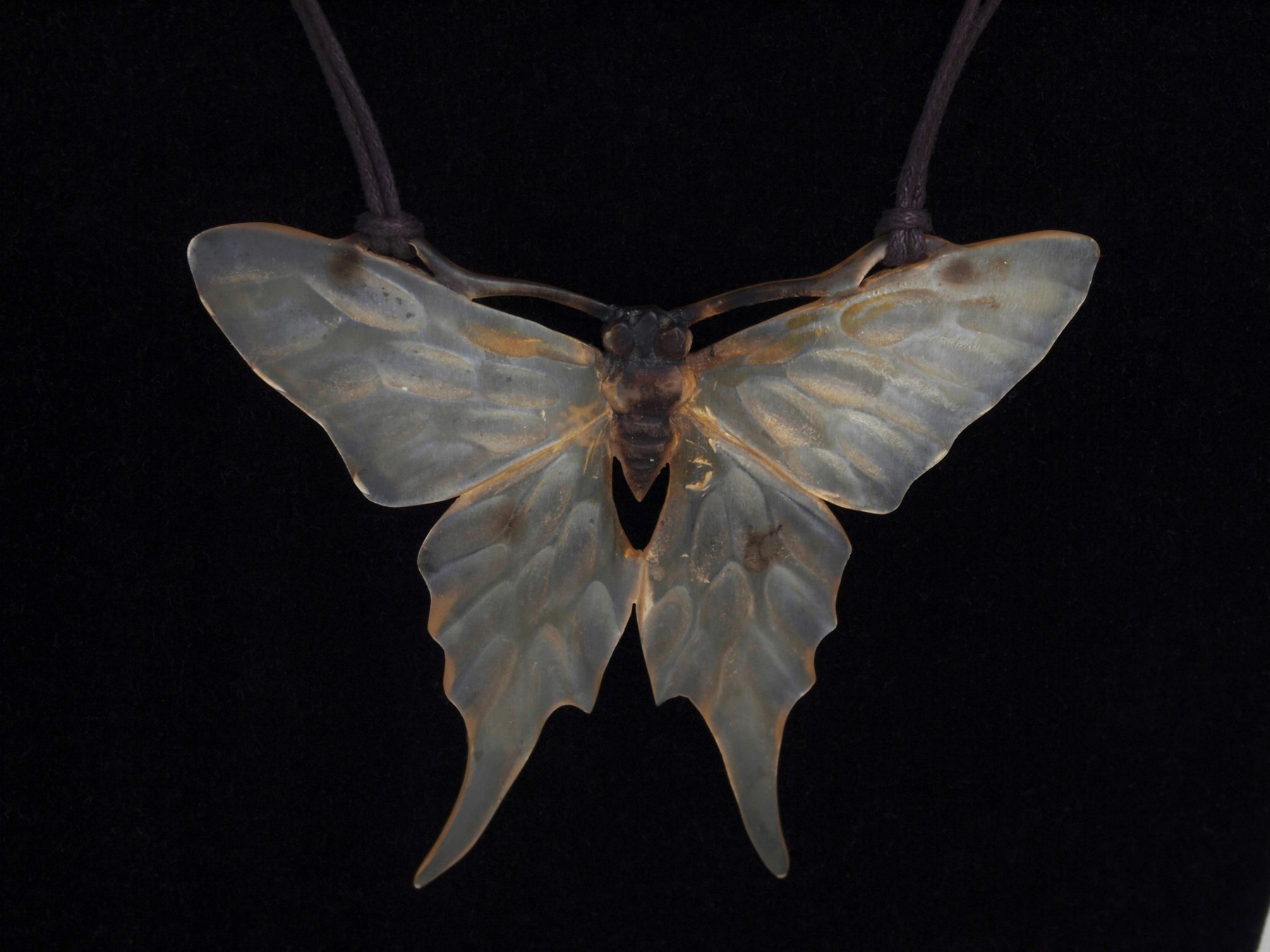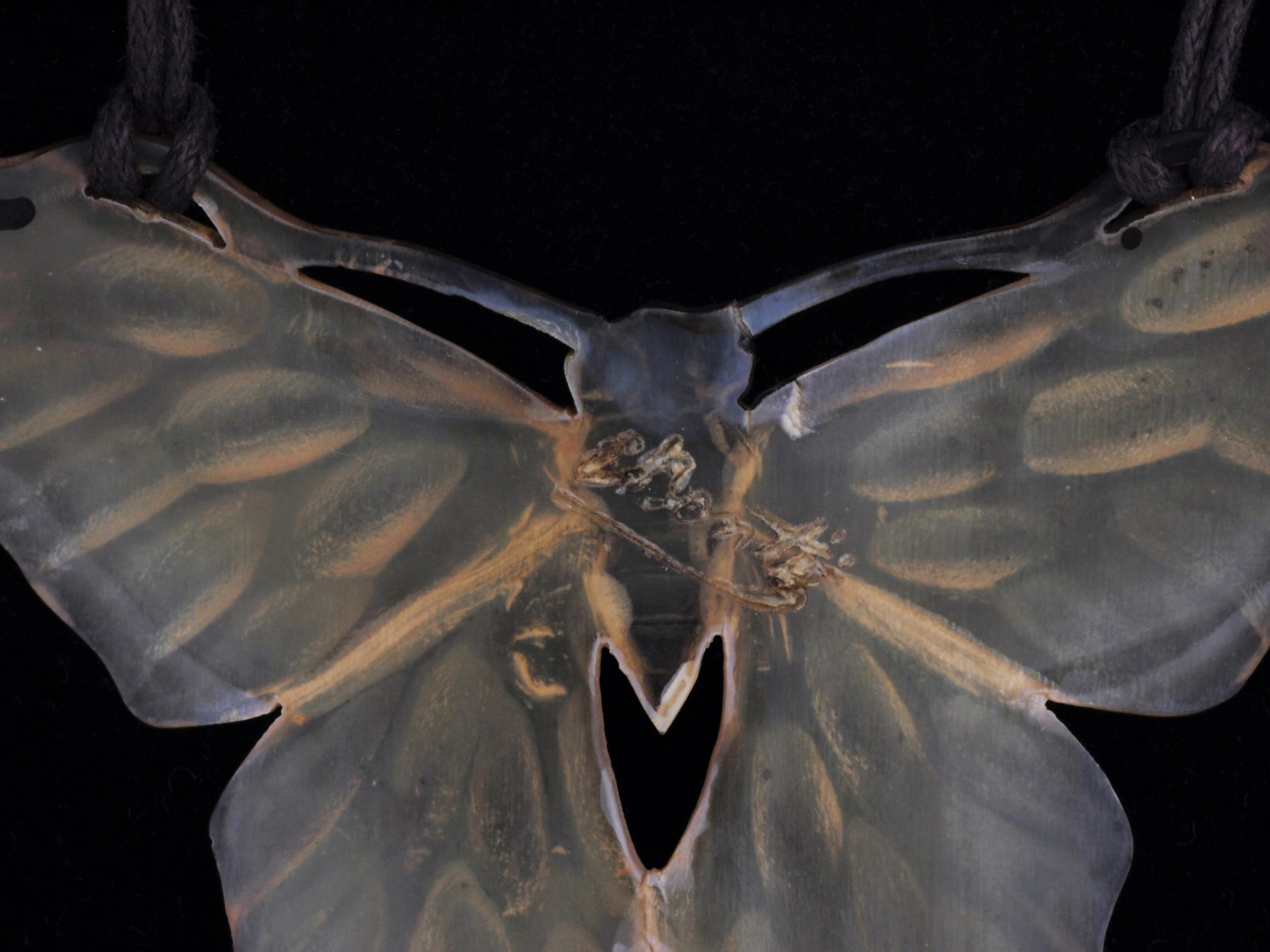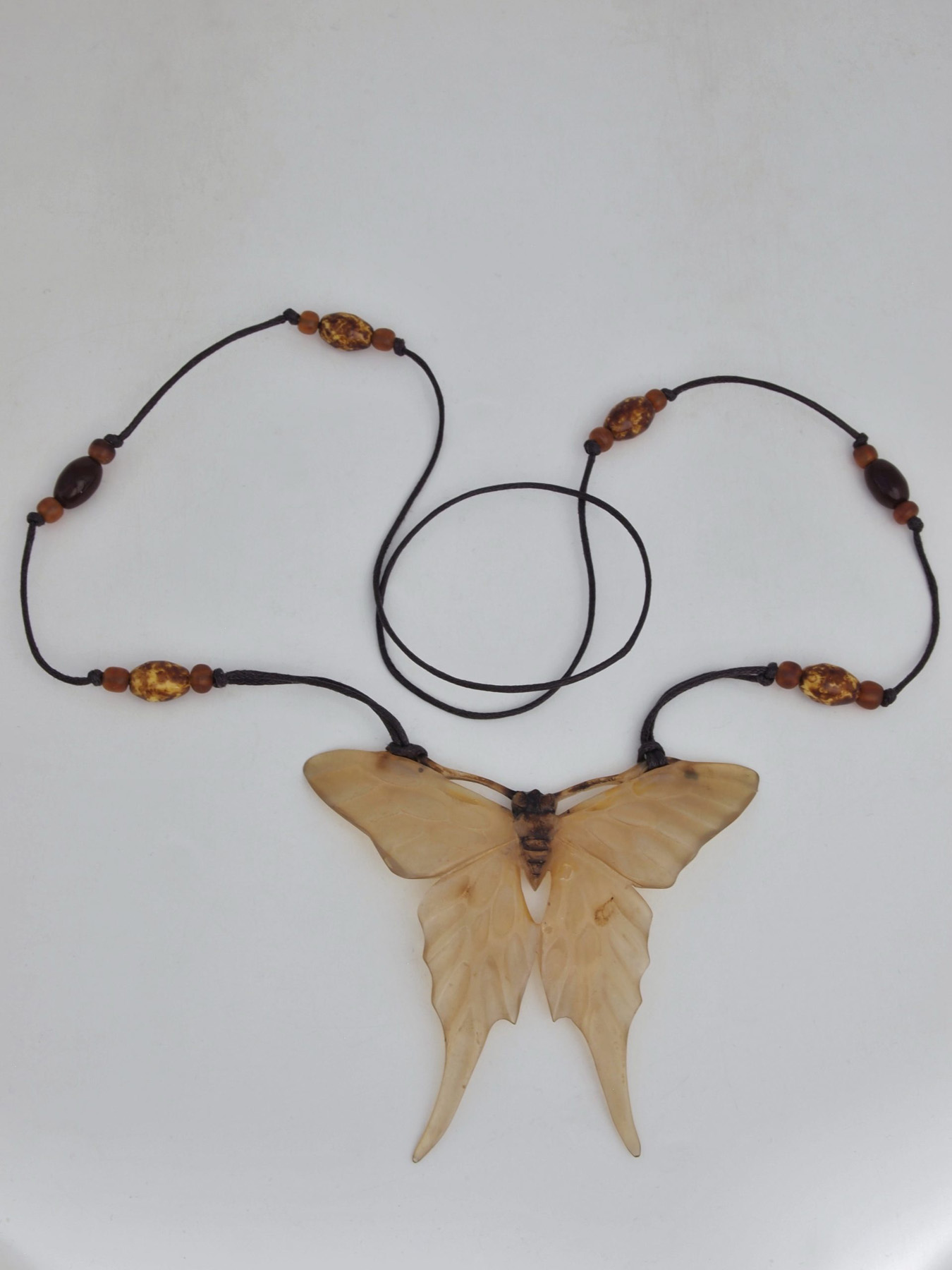Murrle Bennett Gold, Peridot and Mother-of-Pearl Bracelet*
Bracelet from Murrle Bennett crafted in 9 ct. gold, so very typical of the style of jewellery supplied by them to Liberty’s during the early 1900’s. Openwork in design with alternate rectangular and square sections,…
Archibald Knox Gold Pendant for Liberty
Gold pendant with an openwork entrelac design from the drawing board of Archibald Knox and dating from circa 1905. Set with a central blister pearl drop and with a turquoise matrix lower drop, this pendant…
‘Lady on The Seine’ by Dietz Edzard*
Ornately framed oil on canvas by the German born artist Dietz Edzard (1893-1963). This is an atmospheric half length portrait of an elegantly dressed young woman taking refreshment whilst seated on a verandah raised above…
Loetz ‘Candia’ Vase with Silver Overlay
Little cabinet vase from Loetz in opaque ‘Candia’ glass with a trefoil rim, further decorated with an applied Art Nouveau ‘Silberiris’ design in pure silver. Loetz collaborated with a company in the US known as…
WMF Flower Dish
Pewter flower dish from WMF with the original green cut glass removable liner. So Art Nouveau, with its flowing outline, featuring an openwork whiplash design framing leaves and berries of ivy. Originally electro-plated but most…
Contact Details
Tel: +44 (0)7802 872363
0345 6071772
Email: info@nouveaudecoarts.com
Elizabeth Bonté Moth Pendant
Item Description
French Art Nouveau carved gorn pendant necklace in the form of a stylised moth, signed on the back E. Bonté.
The beautifully carved elongated wings are in a translucent milky golden yellow colour which contrasts very effectively with the darker shade of the insect’s body and feelers.
The necklace cord is doubled at the lowest section and is separated along its length by colourful glass beads knotted in a series of threes.
Aproximately 7.5 cm long by 8.5 wide with the cord measuring 67 cm in length.
Mme. Elizabeth Bonté specialised in carved horn jewellery from her Paris workshop and this pendant would have been crafted during the early 1900’s.
